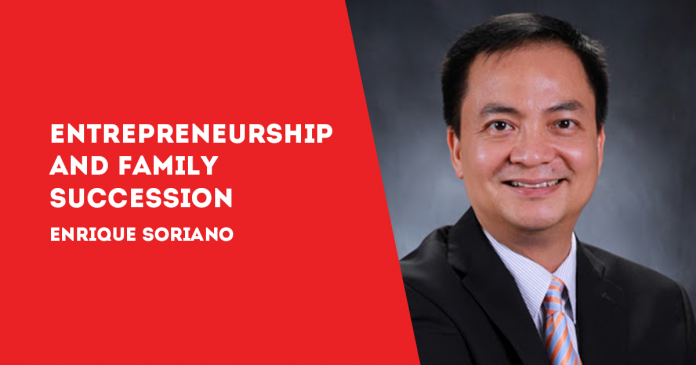
BY PROF. ENRIQUE SORIANO
“WHEN the pay structure of family members remains unclear, undefined, and not explained thoroughly, the emotional element can manifest in the form of jealousy, rivalry, and conflict.”
In Asia, family-owned businesses are still the most dominant organization in all emerging and developed economies, with the exception of China.
For visionaries and business owners, the creation of a startup business is very much like having a child. You begin with a simple idea and labor to bring it into reality, then dedicate a lifetime to nurturing your creation and helping it grow and flourish. And when the time comes to pass on the baton, succession and leadership take root with the entry of committed, passionate and skilled next-generation family members.
What I described is the ideal life cycle of a family business focused on stewardship and legacy. Unfortunately, this “ideal life cycle” represents a measly 5% in our current portfolio of family clients in Asia. The rest are struggling.
Too often, parents/founders find themselves in a difficult position, trying to balance growth with efforts to create the right environment where the children are provided the right compensation package. This is where many leaders are in a bind. And herein lie the complications!
As the business shifts to the next generation (multifamily) phase, more problems are magnified! The business suddenly experiences different stakeholders having varying needs and expectations. These stakeholders (family members) may be active (working in the business) and passive.
Some have families, and others are just starting. As to the way the business compensates these stakeholders, older members would expect better ROI (Returns on their Investments), so they can partake of a good dividend policy, others prefer incentives and profit-sharing, while some may just want higher compensation. Family circumstances (marital status, number of children, lifestyle, and in-law influence) can add to this complication and growing differences in how the business moves forward. This is what sets a ‘Family Business’ from a regular business enterprise. How should leaders pursue the right compensation plan? I am sharing a list of “Must-Do’s” to get the family started on the path to embracing compensation best practices.
a. Why do we need to create a pay structure? What are the objectives? Which model should we employ? Is it industry and market-driven? Will it be a combination of fixed and variable pay? When should the new structure be initiated? How can this be cascaded to the children? Should this proposed plan include non-family executives?
b. When the family commences work on its Family Constitution, the proposed plan is strongly recommended to be initiated and assigned to the Family Council. Crafting the plan is a top priority and must be urgently addressed.
c. To family firms with existing family agreements, we encourage the activation of the family council and the creation of an ad hoc committee to plan the compensation mechanics with the help of a seasoned advisor.
d. For those without family agreements in place but with an active board, we encourage the inclusion of the Family Compensation Plan in the Agenda in the Next Board Meeting. To make the plan impartial, I encourage members of the Board to set up a remuneration committee (RemCom) comprising independent directors and an advisor to recommend the proper structure objectively.
e. For many traditional families with no working board and no family constitution, their best option is to hire an advisor who can help craft a pay-for-performance model and support it with data culled from industry information.
f. For family businesses employing multi-generational families, we usually assign and appoint a dedicated family member and a senior non-family executive to provide oversight in the implementation.
Finally, for business leaders that have no intention to embrace change and institutionalize a pay-for-performance model amongst members coming from the next generation, you will need a lot of prayers and divine intervention to navigate the perilous journey of succession./PN

